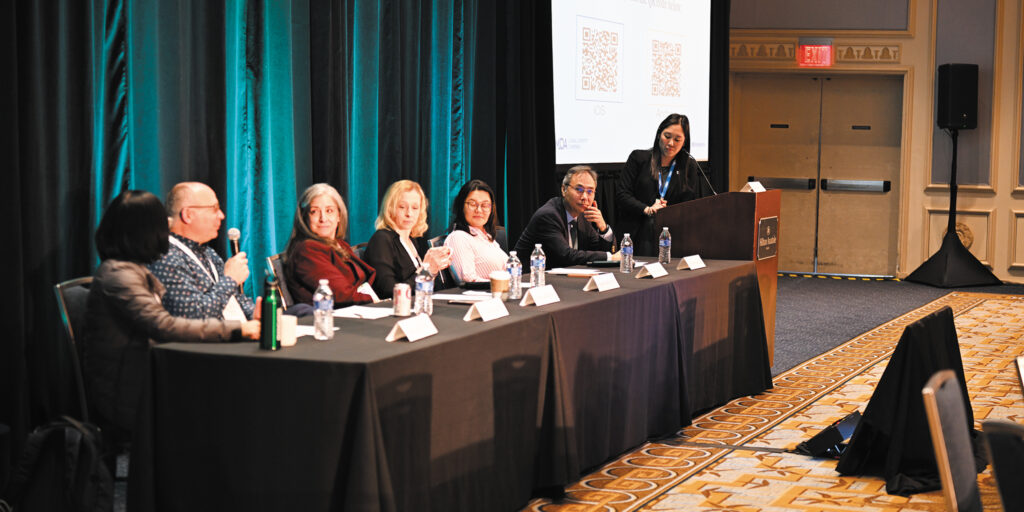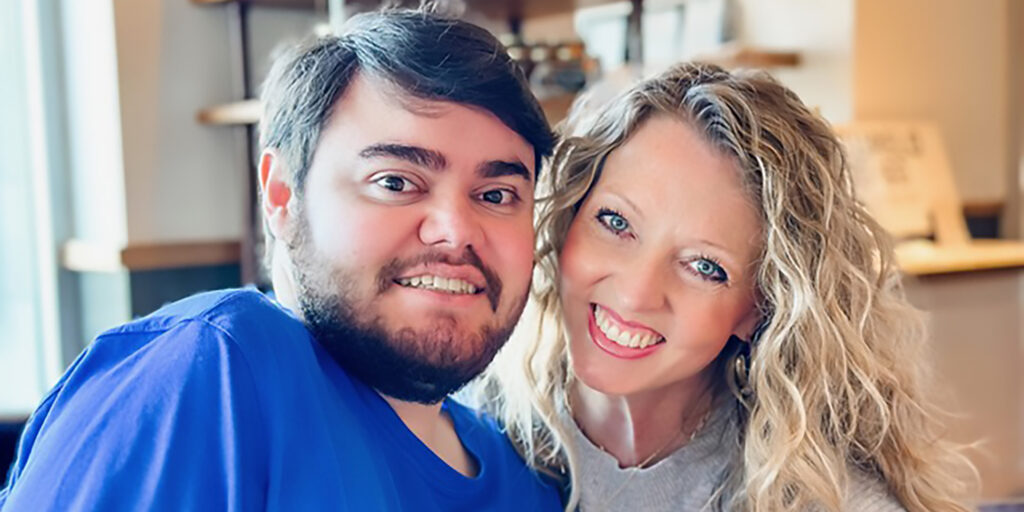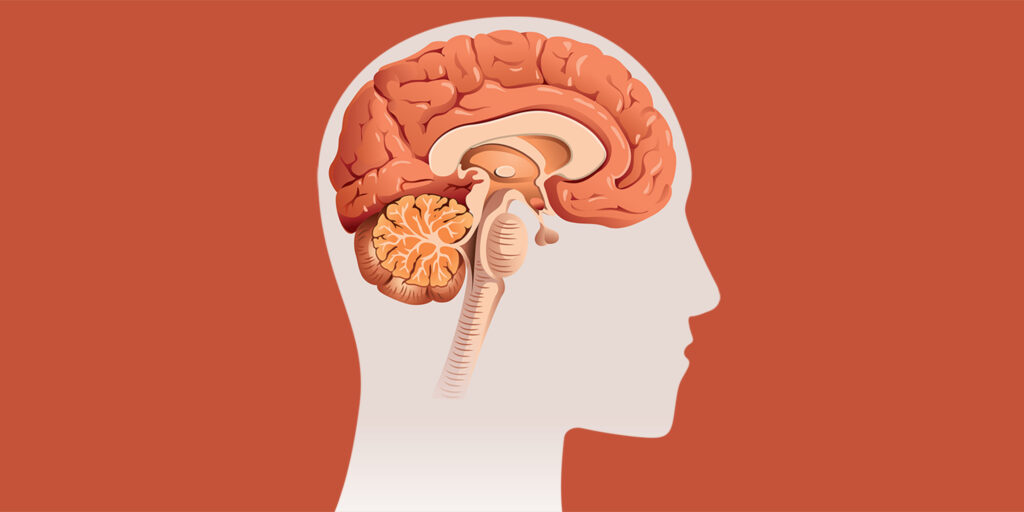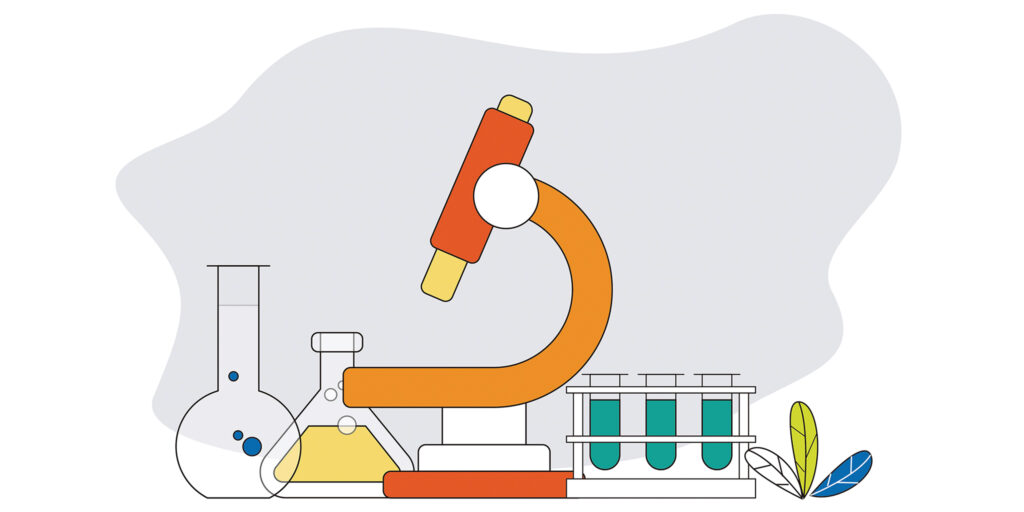
MDA’s Umbrella of Care: One Organization Connecting 300+ Neuromuscular Diseases
By Michelle Jackson | Wednesday, November 12, 2025
When a storm comes, a broad umbrella offers the most protection.
In the same way, MDA supports people living with a wide spectrum of neuromuscular diseases — each distinct but all connected under one canopy of care.
“Being an umbrella organization means that we cover multiple diseases that are fundamentally related,” says Sharon Hesterlee, PhD, MDA’s Interim President and CEO. “They’re mostly genetic, all are rare, and all lead to muscle weakness. Those unifying factors give us a broad reach and strength, allowing us to serve a wide community while recognizing each disease’s uniqueness.”
That reach is especially important for individuals with ultra-rare diseases, which may not be supported by a disease-specific organization. “For example, when it comes to research funding, we’re able to advocate for broader neuromuscular disease research at the National Institutes of Health, which may benefit the ultra-rare conditions that otherwise might not receive research dollars,” says Paul Melmeyer, Executive Vice President of Public Policy and Advocacy at MDA.
Extending our reach
Working across multiple diseases doesn’t divide MDA’s efforts; it multiplies them.
Research
MDA’s research dollars go further because findings from one disease often inform discovery and drug development across many others.
“Because of the unifying factors that tie together all neuromuscular diseases, breakthroughs often have a ripple effect,” Dr. Hesterlee says.
She points to a successful gene therapy developed for spinal muscular atrophy (SMA) in infants. “Those learnings have been really helpful in understanding how we would set up a program in another disease like congenital myasthenic syndromes (CMS),” she says.
Care
At MDA Care Centers, specialists treat the spectrum of neuromuscular diseases. The same neurologists and clinicians often care for people living with various types of muscular dystrophies, amyotrophic lateral sclerosis (ALS), Charcot-Marie-Tooth disease (CMT), myasthenia gravis (MG), and many other conditions.
“One of the immediate outcomes of that unifying factor — muscle disease — is that care tends to be applicable across diagnoses,” Dr. Hesterlee explains. “By operating under one umbrella, MDA ensures that care approaches, expertise, and resources are shared more widely, benefiting all individuals in the entire neuromuscular community.”
Programs
MDA’s umbrella structure also enables programs that would be difficult for single-disease organizations to scale.
“MDA Summer Camp is an excellent example,” Dr. Hesterlee says. “Because we bring together kids with different neuromuscular conditions who share similar needs, we can create a camp experience that simply couldn’t be scaled by a single-disease organization.”
Community support
One of the most powerful aspects of MDA’s umbrella model is the connections it fosters, even for those with the rarest conditions.
“An individual with an ultra-rare disease may be the only person they know with that condition,” Paul says. “But by meeting others with similar neuromuscular diseases, they discover shared experiences, and a true community can be built.”
A careful balance
MDA advances policies, research, and resources that empower the entire neuromuscular community while also addressing the needs of people living with specific conditions, including ultra-rare diseases. By blending broad advocacy with targeted support, MDA ensures that both collective and individual needs are met.
Dr. Hesterlee emphasizes that MDA aims to enhance, not duplicate, the work of disease-specific groups. “We work hard to determine how we fit into that ecosystem so that we complement the work of single-disease organizations in ways where we bring the most value,” she says. “Single-disease organizations may report out information with a lot more detail for their disease, while MDA, as an umbrella organization, provides a big-picture perspective that connects insights and resources across more than 300 conditions.”
Both approaches are crucial to providing the breadth and depth needed to support the neuromuscular community.
“Collectively, we are all working to make sure the whole is greater than the sum of the parts,” she says.
Michelle Jackson is a writer for Quest Media.
Bringing More Voices to the Table
Coalitions — networks of organizations or individuals united around a cause — play a vital role in advancing the rights and needs of people with disabilities. As an umbrella organization, MDA amplifies these voices, turning many into one powerful chorus.
“We are uniquely capable of bringing along other rare neuromuscular disease advocacy groups in public policy and advocacy efforts that otherwise might have difficulty collaborating,” says Paul Melmeyer, MDA’s Executive Vice President of Public Policy and Advocacy. “We’re able to look for commonalities and put 50 or 60 voices behind an effort rather than one or two.”
MDA takes a leadership role in many neuromuscular disease coalitions, such as the Neuromuscular Advocacy Collaborative, made up of more than 30 patient advocacy organizations.
At the same time, MDA joins larger groups focused on chronic disease or disability advocacy to ensure that the neuromuscular voice is represented.
“For individuals with a neuromuscular disease navigating their health condition or disability, we’re able to provide that voice for these coalitions that are advocating for an even broader number of individuals,” Paul says.
Next Steps and Useful Resources
- Learn all about how MDA’s community programs support and empower people in every stage of life with a neuromuscular disease.
- Stay up to date on Quest content! Subscribe to Quest Magazine and Newsletter.
TAGS: A Look Inside, Community, Healthcare, MDA Care Centers, Research, Summer Camp
TYPE: Featured Article
Disclaimer: No content on this site should ever be used as a substitute for direct medical advice from your doctor or other qualified clinician.




